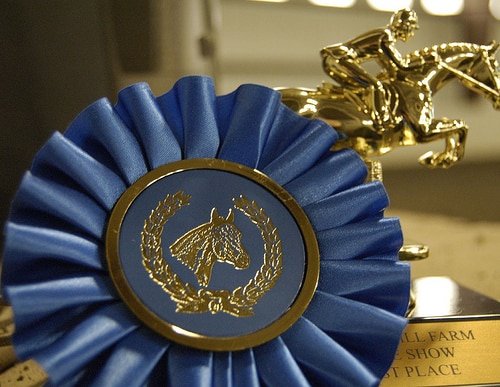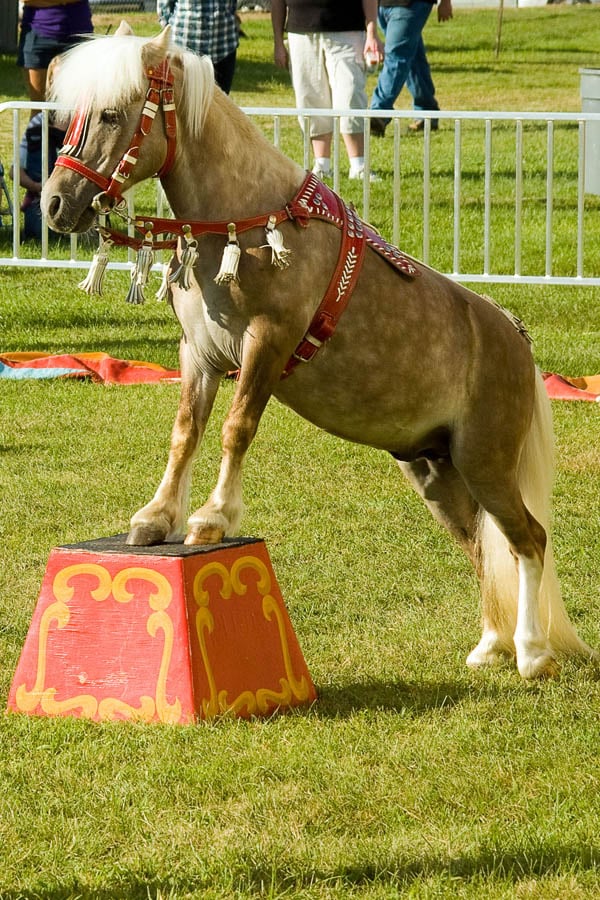
The reining horse and the reined cow horse, the flashy show-offs of the western showpen. We admire them with their grace, beauty, and refinement, but what is the difference between the two disciplines other than the obvious that one uses cows and one doesn’t? Can one horse compete in both?
History
According to the National Reined Cow Horse Association, reined cow horses originated in the vaquero tradition of early Spanish and Mexican horseman who managed the range-bred livestock of vast California ranches during the 18th and 19th centuries. The cattle were notoriously wild and rank, demanding quick-footed, intelligent horses with nerves of steel to assist them in branding, sorting and doctoring. The California vaqueros developed a training system that is still revered today for its precision and elegance.
Even today, reined cow horse remains a predominately west coast discipline. While it has spread to the far reaches of the eastern seaboard, California still clings to its title as the cow horse capital and all of the best vaqueros can still be found haunting the west coast.
Reining, on the other hand, is an east coast dominated discipline. It is an offshoot of reined cow horse. Reining horses are sometimes referred to as dry stock horses because many are not trained on cattle whereas reined cow horses are still expected to be able to work a cow. Reining developed on the east coast away from the influence of cattle ranches and working ranch horses, leaving the finished product less practical as time went by and training methods strayed further from their vaquero roots.
Equipment
Reined cow horses are still expected to be ridden in rawhide romal reins. They are started in a bosal (sometimes called a hackamore) until they are 4 or 5, before they move on to a leverage bit. Finished vaquero horses ride in a spade bit. Reining horse, on the other hand, are started in a snaffle and work their way up to large leverage bits. They ride in split leather reins.
Carriage
The differences in tack aren’t just aesthetic. Being started in a bosal means that reined cow horses are broken at the poll rather than the withers like a reining horse. This gives the reined cow horse a more elevated topline than a reining horse. This elevated topline is more like a dressage horse than a reining horse and it makes them lighter on the front end which allows them to be quicker on their feet when going after rank cattle in the California bush.
[clickToTweet tweet=”Being started in a bosal means that reined cow horses are broken at the poll rather than the withers like a reining horse.” quote=”Being started in a bosal means that reined cow horses are broken at the poll rather than the withers like a reining horse.” theme=”style4″]

Reining horses have a more stereotypical level topline with a lowered head and neck which can make it harder for them to pick up their front end. However, the reining horse’s level topline is what allows him to stretch out and produce that beautiful reining spin that spectators love so much. A proper reining spin requires straightness through the body in order to be clean and correct as he spins on that inside hind foot.
The reined cow horse, on the other hand, produces a very different turn. The cow horse turnaround may look like a faster reining spin, but it is a different maneuver altogether.
Reining Horse Spin vs Cow Horse Turnaround
Remember Monday’s blog where we talked about the mechanics of the reining spin? If you remember, one of the biggest problem with teaching the reining spin is the horse spinning on the wrong (outside) foot. This problem comes when there is not enough forward momentum in the turn.
Want to know how to teach a cow horse turnaround? Reining spin minus forward momentum.
A cow horse turnaround is actually a spin on the outside hind foot and, unlike the reining spin, it requires backwards momentum.

What’s really the difference?
A reining spin may be pretty in the arena, but it’s really not practical for anything other than showing off to your friends. If you try use a reining turn on the inside foot when going after a rank cow, you’ll end up behind the motion and lose the cow every time because the turn is just too slow. The cow will shoot out in front of you and run laughing off into the brush.
If you watch a reining pattern, notice how much effort it takes for the horse to stop and start the spin. No imagine trying to use that turn on a cow that is ducking and dodging. A cow horse turn is far more effective because it allows for quick changes of directions. Watch any cattle event and you will rarely see a horse turn on the inside hind foot.
Can one horse compete in both?
Not very successfully. It is easy enough to teach a horse to do both a spin and a turnaround. But reining and reined cow horse require two different types of movement and body carriage. One horse cannot be successful and win at both events.
A little extra
Click here to see a video of a reined cow horse who demonstrates the more upright carriage of the vaquero cow horse. Video includes a commentary from an AQHA judge.
Click here to see a lovely video of a reining horse that clearly demonstrates the lower profile of the reining horse.
(All videos all property of the AQHA.)
Photo by bjasper8










How can a horse participate in Ranch Horse versatility class which requires both exercises?
I gotta question if who ever wrote the article on the cowhorse vs the reining horse has ever seen let alone rode a true reined cowhorse the description of the spin is wrong on every point the reining horses paddle on their turns and stops and being broke down at the withers could never be usefull for a days work. A good working horse will turn his front end over and through it’s hind quarters on its inside leg.
Welcome to the blog, Pat. I appreciate that you may share a different viewpoint on certain aspects. Turning on the inside leg is much prettier in the reining arena, but it will leave you behind to motion when working a cow, at least in my experience. I agree that being broke at the withers is not useful for a day’s work, but I have never met a reining horse that would stand up to or had the training for a good day’s work. Reined cow horse is what truly showcases the working horse. The more upright posture and practical turning style allows the horse to showcase his ability to truly work. Of course, how reined cowhorse is judged varies by region. On the east coast it tends to be judged a lot like reining. On the west coast it is more like the traditional reined cowhorse. It really comes down to a matter of opinion. Thanks for stopping by to comment! Friendly debate is always welcome.